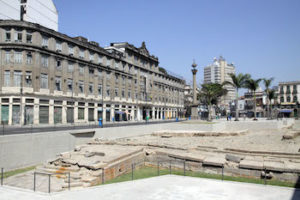
*On this date in 1811, we affirm the Valongo Wharf. This was a Portuguese slave trade processing location in Rio de Janeiro, Brazil.
Its location is between the current Coelho e Castro and Sacadura Cabral streets. We use this date because Rio de Janeiro was founded on March 1, 1565. In the mid-1400s, Brazil was the first stop for white Europeans (Portuguese) on the Middle Passage from West Africa. Until the mid-1770s, slaves landed at Praia do Peixe, now called Praça 15, and were traded in Rua Direita, in plain sight in the center of Rio de Janeiro.
In 1774, new legislation established the transfer of this market to the region of Valongo, on the initiative of the second Marquis of Lavradio, Dom Luís de Almeida Portugal Soares de Alarcão d'Eça e Melo Silva Mascarenhas, viceroy of Brazil, alarmed at "The terrible custom of as soon as the Blacks disembark in the port from the African coast, enter the city through the main public thoroughfares, not only loaded with innumerable diseases but naked."
The market was transferred before the Valongo Wharf was built, and the alternative was to land the slaves at the customs and immediately send them by boat to Valongo, from which they would jump directly onto the beach. In 1779, the Rio slave trade finally settled in the Valongo area, where it peaked after 1808 with the arrival of the Portuguese royal family. From 1808, traffic nearly doubled following the city's growth, and after the transfer of the Portuguese court to Brazil, it went from 15 thousand to 30 thousand inhabitants. However, it was not until 1811 that the pier was built, and the landing was done directly on Valongo.
From 1811 to 1831, during the twenty years of its operation, between 750 thousand and one million slaves landed at Valongo. At the end of the 1820s, the slave trade to Brazil was at its peak. Rio de Janeiro was then an important commercial slave trading post. Valongo was the main gateway for Blacks from Angola, East, and Central West Africa - while Maranhão and Bahia ships came from Guinea and West Africa. 1831, the transatlantic slave trade was banned, and Valongo was closed. The traffickers then proceeded to make the landing in clandestine ports. In 1843, a 60-centimeter thick dam was made on the dock of Valongo to construct a new anchorage destined to receive Princess Teresa Cristina, future wife of D. Pedro II.
Between 1850 and 1920, the area around the old pier became a space occupied by Black slaves or freedmen of several nations - an area that Heitor dos Prazeres called Pequena África (Little Africa). The wharf was then renamed 'Cais da Imperatriz.' However, this would also eventually be buried in 1911 during the urban reform undertaking. Brazil received about 4.9 million slaves through the Atlantic trade. In 2011, during the excavations carried out as part of the revitalization works in the Rio de Janeiro port area, the two wharves - Valongo and Imperatriz - were discovered, one on top of the other, and, along with them, a large number of amulets and worship objects from Congo, Angola, and Mozambique. The National Historical and Artistic Heritage Institute and the city of Rio de Janeiro inscribed the wharf's archaeological site to the United Nations Educational, Scientific, and Cultural Organization World Heritage Site Tentative List. The wharf was then officially designated a World Heritage Site in 2017.